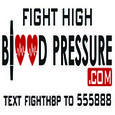Changed Blood Pressure Guidelines: Good News or Not?
Making lifestyle changes to keep your blood pressure (BP) within normal range needs to begin in young adulthood. The problem with having high BP (or hypertension) is that its negative health impact can take years to become apparent. Then, wham. You can experience heart problems, kidney failure, and even a stroke. Diagnostic guidelines for high BP were changed in 2017 by the American Heart Association and American College of Cardiology in an effort to bring hypertensive adults into treatment at an earlier stage.
The following describes the changed guidelines, and how hypertension can begin destroying your health just as you are graduating from college and entering the workforce. Also discussed are ways hypertension is determined by doctors and treated.
Systolic versus Diastolic Blood Pressure (BP) – The Difference
Healthcare providers measure BP as the amount of pressure exerted in arteries during the contraction of the heart muscle, and this is the systolic reading. Healthcare providers then measure the diastolic pressure, which is defined as the pressure exerted between heartbeats when the heart muscle relaxes.
While healthy systolic and diastolic readings—at rest—are usually recorded as 120/80 mmHg, it is not uncommon for the systolic and/or diastolic reading to be higher (or lower) for either the systolic (first number) or diastolic (second number) pressure. Both readings are recorded to represent the complete BP reading, which is acquired via a gauge called a sphygmomanometer.
Three Categories of Hypertension
The following are the three categories of hypertension presented on the Federal Occupational Health website:1
• Prehypertension: Systolic reading: 120-139; Diastolic: 80-89 mmHg.
• Stage 1 hypertension: Systolic reading: 140-159; Diastolic: 90-99 mmHg.
• Stage 2 hypertension: At or above 160/100 mmHg.
Systolic Pressure and Changed Hypertension Guidelines
Instead of a diagnosis of hypertension at 140/90, the changed guidelines in 2017 lowered it to a reading of 130/90. One impact of this changed diagnosis guideline is that insurers are more likely to approve payment for treatment of early-stage hypertension (as opposed to denying payment). This benefits healthcare providers, as well as their patients.
Meanwhile, the American Academy of Family Physicians (AAFP) did not endorse the changed guidelines.2 Consequently, some controversy still remains in terms of the necessity for the BP guideline change.
Risk for Hypertension and Drug Treatments
Genetics and specific disorders (e.g., diabetes) increase the risk for hypertension—even among Millennial-aged adults—but lifestyle factors are equally important. Three lifestyle habits that particularly place you at higher risk for developing hypertension are:3
• Tobacco use (e.g., cigarette-smoking);
• Consuming a diet high in sodium;
• Lack of regular physical activity
Two types of medications utilized in treating hypertension are diuretics and beta blockers.
Consequences of Uncontrolled Hypertension
Hypertension is closely linked to the development of atherosclerosis. In turn, atherosclerotic plaques can travel in the blood and cause a heart attack or stroke. For pregnant women, hypertension is linked to the development of eclampsia—which can be life-threatening (and often leads to miscarriage). The insidious issue with hypertension is that there are usually no symptoms until a major health complication has occurred.
Performing an intensive work-out—such as jogging a 5K race—can increase BP to a dangerous level in hypertensive individuals. Therefore, managing hypertension (either through lifestyle changes or medication) is crucial to preserving your health as you head toward middle-age.
Candi Green
www.fighthighbloodpressure.com
References:
1. US Dept. of Health and Human Services (DHSS), Federal Occupational Health. Hypertension and Pre-Hypertension. Webpage: https://foh.psc.gov/NYCU/hypertension.asp
2. American Academy of Family Physicians (AAFP). AAFP Decides to Not Endorse AHA/ACC Hypertension Guideline. Webpage: https://www.aafp.org/news/health-of-the-public/20171212notendorseaha-acc...
3. Centers for Disease Control and Prevention (CDC). Behaviors that Increase Risk for High Blood Pressure. Webpage: https://www.cdc.gov/bloodpressure/behavior.htm
About FightHighBloodPressure.com of Chicago Illinois:
Our mission is to introduce lifestyle changes that help manage high blood pressure, reduce risk and promote an overall healthy heart.

Post new comment
Please Register or Login to post new comment.